
Product test
Water on the move: with the Lifestraw Go filter bottle
by Siri Schubert
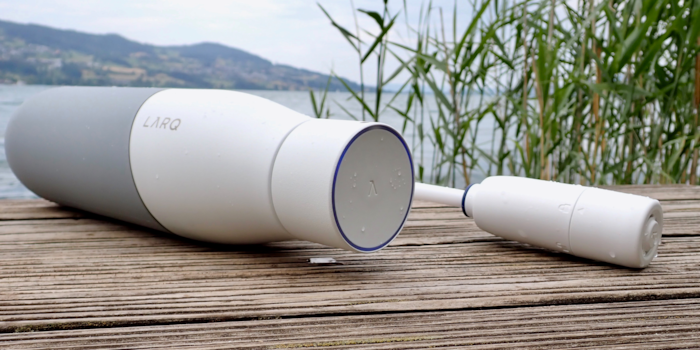
In a series of articles, I take a look at different methods of obtaining drinking water without having to carry it when doing water sports or hiking. In the first episode, I tested the Lifestraw Go bottle. This time, I take a few sips from the Larq self-cleaning water bottle.
When I'm on the water or in the mountains, it can take a long time. I often spend several days at a time in regions where drinking water is not available at every crossroads. That's why I test filters, bottles and small electrical devices that allow me to treat river, stream or lake water in a relatively simple way.
Until now, I've often used the Lifestraw Go filtering gourd, which I introduced in the first episode of the series. Now I want to find out if the Larq self-cleaning water bottle lives up to its promise.
Self-cleaning is a good idea. The gourd purifies the water I take from lakes, streams or rivers using UV-C radiation. PurVis technology, which uses LED light to produce the radiation, eliminates up to 99.9 per cent of bacteria and viruses, according to the manufacturer. Laboratory reports on the reduction of E.coli bacteria (in English) and salmonella (in English) confirm this.
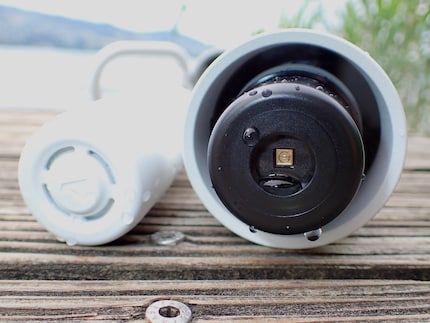
The UV-C lamp is integrated into the lid of the Larq water bottle. Before the first hike, it needs to be charged for one to two hours using the USB cable supplied. The battery has already lasted six days with me since the first charge, during which time I've used the cleaning function five to six times a day for testing purposes. The manufacturer states that the filter function can be used for ten to twelve days with a battery charge in 'adventure mode' (more on this later). Under normal conditions of use, a charge should last one to two months at a rate of three or four cleaning cycles per day.
The water bottle comes in a double-walled insulated version and a lighter, single-walled version. For hikes and SUP outings, I opted for the lighter version, with a capacity of 950 millilitres.
At the edge of a lake, I filled the bottle, unscrewed the cap and activated the cleaning mechanism by pressing the cap. The blue LED light indicates that the process is underway. As soon as the light goes out after a minute, the water is ready to drink. Once activated, the mechanism switches itself on every two hours, until you deactivate it by pressing a button. In this way, any bacteria that enter the bottle while drinking are destroyed at regular intervals.
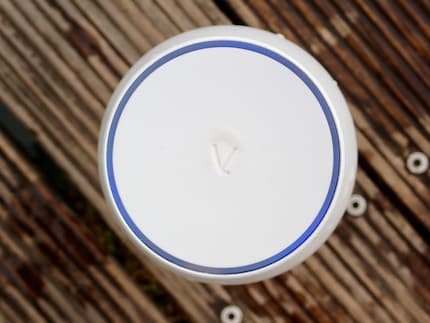
As a trial by Treadmill Reviews showed, it is not uncommon for germs to be present on the necks of different water bottles that had not been cleaned for a week. Philip Tierno, professor of microbiology and pathology at New York University, explains in a interview with online magazine Mashable how a health-damaging biofilm can form inside the water bottle if it is not cleaned regularly. That's what Larq wants to prevent with the self-cleaning mechanism. When you refill the flask with lake or stream water, you can restart the cleaning mechanism by pressing a button and the cycle starts again immediately.
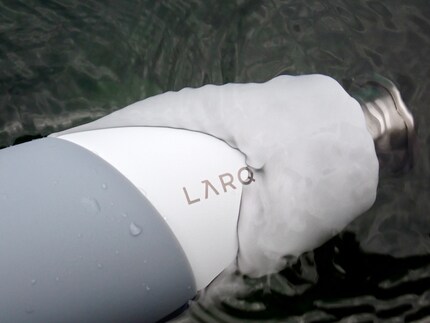
To make sure no small parasites survive, start the "adventure mode" after filling the water bottle by pressing the cap twice. The cycle then takes three minutes and eliminates 99.9999 per cent of salmonella instead of 98.20 per cent, according to the laboratory report. The method you use depends partly on your own perception of the risks. Here's my recommendation: if you're drawing water from rivers or lakes close to homes or farms, "adventure mode" is a better choice, even if it requires more battery power. In the first article in the series, you'll find out why an increase in population, livestock and pasture means an increase in the number of germs in the water.
If the body of water is located next to villages or pastures, there are usually restaurants or shops nearby. It shouldn't be difficult to find drinking water or ways to recharge batteries in the meantime, giving you up to ten days' autonomy. If you're drinking water from a mountain stream in a very remote area close to the source, or if you want the battery in your water bottle to last longer than two weeks, normal mode should be sufficient.
I've only been using the Larq bottle for a few days and so far I've drunk about two litres (two 950 millilitre bottle fills) of lake water treated with PurVis. From a health point of view, I've tolerated it well. What bothers me is that the suspended particles are not filtered out. So I tried a second cover, which is also available with a filter but without UV-C light, which should remove not only sediment but also chlorine, heavy metals and mercury (for those in the know: the filter complies with NSF/ANSI standards 42, 53 & 401).
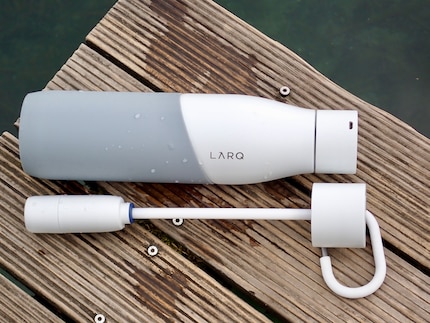
I've already drunk just under a litre of UV-C light pre-treated water through the filter and, in terms of taste, it's certainly an improvement over unfiltered water. However, I don't find it optimal that, as with the combination of the LifeStraw Go bottle and Steripen in the first episode of the series, I have to carry two products and purify the water in two stages if I also want to get rid of suspended particles and heavy metals.
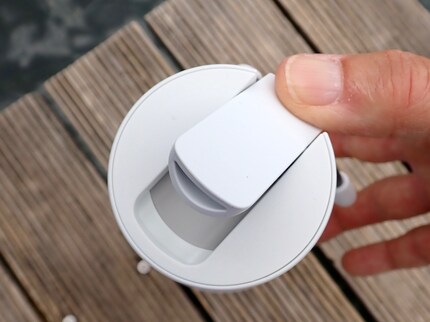
On the other hand, the neck of the filter lid is well designed. You can open it with your thumb without touching the mouthpiece. This is more hygienic than other suppliers' water bottles, where you have to extract the neck from the cavity.
Conclusion: although the combination of filter lid and UV lid gives the best result, I find that integrating the UV light into the lid is a good solution. That's why the Larq water bottle will certainly be present on my next outings. After all, as long as I'm drinking clear water that's relatively low in sediment on an excursion, the elimination of viruses and bacteria is enough to keep me healthy and offers better protection than a fine-pore filter.
Headline photo: Siri Schubert
Research diver, outdoor guide and SUP instructor – I love being in, on and around water. Lakes, rivers and the ocean are my playgrounds. For a change of perspective, I look at the world from above while trail running or flying drones.